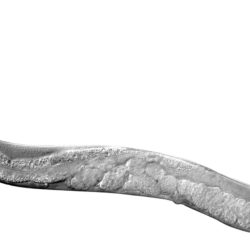In April 2017 I published a post titled “Why is there so much talk about Epigenetics?”. I think I did a pretty decent job explaining what Epigenetics is, and why it is such a critically important part of biology. The gist is, that the regulated output of our genomic information depends on Epigenetics. This is achieved by specific chemical groups and protein along the chromosomes that control their expression into the proteins and other products needed for the life of a particular cell. Along the way, I gave props to Jean-Baptiste Lamarck, who had some reasonable ideas which later were shown to be wrong (he died a couple of decades before Mendel and Darwin put us on the right path). All good to that point.
Where I think I went wrong about Transgenerational Epigenetics (TGE)
An important part of the article was Transgenerational Epigenetics (I’m going to use the acronym TGE for that jawbreaker). TGE is epigenetic modifications handed down through the generations. I concluded that the available evidence for TGE was unpersuasive. My analysis of the evidence people often put forward for the existence of TGE was probably correct. But I now think that my general conclusion WAS PROBABLY WRONG. My mistake was not looking hard enough for evidence of Transgenerational Epigenetics because I was too wedded to one of the basic tenets of sexual reproduction. Namely, that in organisms like us, epigenetic modifications get wiped out during the production of embryos. If that is so, and the textbooks say it is, then there doesn’t seem to be any way for TGE to happen.
Somebody once said, if your data don’t agree with the theory, you should check your data. That’s true if the theory is really solid, as in some parts of Physics. But Biology is not as settled, and what we call theories are often in a state of maturation. In Biology, data rule, and the data tell me that TGE, or something that works just like it, exists. Most of the following is verbatim from the original article. But the last section, formerly called “Lamarck redux”, which argued that TGE was not likely to be true, has been rewritten after my further education. If you’ve read the 2017 article, you can skip ahead to the last part, beginning with “Is TGE in humans real?”.
The winter of great suffering in Holland
Ottawa, the capital of Canada, greets each Spring with a festival featuring a million blooming tulips. That festival got its start in 1953, and was the result of a gift from the Royal family of Holland, a gift given in recognition of two important events linking Holland and Canada during World War II. The Dutch Royal family had taken refuge in Ottawa, and Princess Margriet was born there in 1943. The other significant event was the liberation of western Holland, including the cities of Amsterdam, Rotterdam, and The Hague, by Canadian soldiers, for which the people there remain grateful to this day. When the War ended in 1945, the Dutch Royal family sent 100,000 tulip bulbs to Ottawa, and each year they add to the gift.
The liberation of western Holland was particularly critical, because by April of 1945 the people living there had been subjected to starvation so severe that thousands died (estimates are around 20,000 dead, with the health of many more people seriously affected). In retaliation for civilian resistance, the German army had put an embargo on food shipments to the area in the Fall of 1944. Although they allowed delivery by water after November, that avenue was closed by the unusually harsh winter conditions, which froze the canals. The fighting made transportation by airdrop difficult. The 4.5 million citizens of that part of the country could only get an average of 1,000 Calories of food a day by the end of November, 1944, and by the end of February that amount had dwindled to 580 Calories (the average consumption today in North America is about 2,500 Calories a day).
The starvation conditions of the winter of 1944-45 is referred to by the Dutch as the “Hongerwinter”. One of the outcomes of that period was that babies born during the starvation were smaller than average, which is not surprising considering the nutritional states of their mothers. Epidemiological studies have demonstrated subsequent health problems of this birth cohort, again, not surprising given what we know about the effects of low birth weight. But some later studies also found that the children of these children, who were born during nutritionally prosperous times, also had health problems.
The proposed explanation for this “knock-on” effect is “transgenerational epigenetic change”, which proposes that there are changes to our inherited genetic characteristics that are due not only to alterations in DNA sequence, but to other kinds of chemical changes in our chromosomes. TGE in the case of the Dutch children proposes that there were non-DNA changes to the original hungry mothers’ chromosomes that led not only to their children’s subsequent health problems, but also to health issues of their grandchildren. This is human epigenetic change reaching across generations, and it is a radical idea, for reasons I will explain. It is also hotly debated. Before considering TGE further, it’s useful to focus on Epigenetics itself. An interesting topic.
What is epigenetics?
Epigenetics refers to differences in the chromosomes that affect their activity and that are not due to changes in their DNA sequence (in other words, mutations) (although mutations can influence Epigenetics). One form of Epigenetics is due to the way the chromosomes are made compact in the cell. The DNA of the average human chromosome would be about 6 centimeters (just under 2.5 inches) long if it were stretched out, which it certainly isn’t, because cells aren’t nearly that far across; an average liver cell nucleus is less than one-thousandth of a centimeter in diameter. To pack the average chromosome into its nucleus requires making it more compact by about 5- to 10,000-fold. The ratio between the total length of a chromosome and the nuclear diameter is about the same as the ratio between this dash, —, and the total length of this essay. So, the DNA in the chromosomes in the cell needs to be compacted.
DNA compaction is one of the most awesome features of biology, and is a subject of intense study. In a human cell, the DNA chain itself is wound around clusters of small basic proteins called Histones. If the compaction stopped there and we had electron microscopic eyes, the chromosome would look like a necklace of beads on a string, with its overall length reduced by about 7 times. A thousand times greater compacting is still needed to get the chromosome into a cell’s nucleus. This necklace now folds back and forth on itself over most of its length, reducing the overall length by several times. That folded structure then folds into a higher-order loop, which in turn assembles itself on a protein scaffold. This series of foldings and windings results in the awesomely compact chromosomal structure.
This densely packed chromatin is not accessible for genetic readout, and is part of one epigenetic mechanism in cells. To be expressed, the tightly packed chromatin needs to be modified, loosened, which involves enzymatic reactions that change the chromatin in specific parts of the genome and open it up for genetic expression.
Another form of epigenetic regulation of genes is due to a chemical modification of one of the DNA bases, Cytosine, by adding a methyl group (—CH3) to it. This chemical decoration influences whether nearby genetic material can, or will be, expressed. A high density of methyl-Cytosine groups near a gene in DNA can cause it to be silenced. And we now know of a third epigenetic mechanism, which is gene regulation by small RNA molecules that bind to, and silence, specific parts of the chromosome. None of these epigenetic changes involve altering the sequence of DNA; that’s what epigenetic means. But they are handed down between mother and daughter cells of a specialized lineage, such as muscle. This is critically important for all forms of multicellular biology, like the human body.
Epigenetics and your left thumb
First of all, if you haven’t done this before, a thought experiment. The DNA of a complex organism such as a toad or a human is almost exactly identical in sequence in each of its cells, and in both toads and humans it is a composite of chromosomal contributions from mom and dad. Then how is it that we have skin cells, and neurons (of many different types), and left thumbs? What makes a skin cell a skin cell? That’s where development and differentiation come in. Life begins with a fertilized, undifferentiated egg. As this cell divides and divides again, separate groups of the resulting cells begin to differentiate themselves according to a complex developmental program. Each line of cells that branches off develops a genetic structure unique to itself, but that doesn’t involve changes to its DNA sequence. These altered structures are due to epigenetic changes.
Different developing tissues and organs have distinctive patterns of “loosened” histone proteins that make different sets of genes available for transcription. And different sets of genes have altered patterns of Cytosine methylation that disinhibit genes near them and allow them to be read out. The DNA sequences in different cells are the same, but not their epigenetic context.
Tissue-specific gene regulation also includes complex networks of proteins and other molecules that control the expression of specific genes, although these are not usually included in the definition of epigenetic changes. For example, a cell might have receptors that recognize the hormone insulin, which transmit that recognition event as a signal inside the cell, giving rise to a hormone-dependent, tissue-specific response. This network of regulatory factors is specific to the cell type, and is itself a product of epigenetically-regulated expression.
The contentious question today is not whether Epigenetics matters; of course it does, otherwise you wouldn’t have a left thumb, or a liver, or blood cells, or all the rest of your intricate bits. The issue being hotly debated is whether epigenetic patterns are “transgenerational”; in other words, are epigenetic patterns of the parents passed down to their children? This is the issue central to the discussion about the effects of the Dutch Hongerwinter. Did the stress of starvation, resulting in low birth-weight babies, then get passed, somehow, to the chromosomal structures of the next generation, resulting in health problems for that generation as well? Before considering that question, it’s worth looking at the history of Transgenerational Epigenetics.
The fraught history of Transgenerational Epigenetics
The standard model of biological inheritance is that genes determine the phenotype, or biological nature, of an organism. This model grew out of a fusion of Darwinian evolution, Mendel’s theory of genetic inheritance, and the modern understanding of how genetic systems work. According to Mendel, the factors determining biological inheritance, what we call genes, are passed down through generations largely unchanged. The major source of biological variation in humans is due to the sexual nature of reproduction — male and female parental genomes are mixed to produce the child’s genetic content. Selection favours the “best” genetic components under given circumstances, resulting in Darwinian evolution. (The modern synthesis of genetics also includes that a wide variety of genetic and phenotypic possibilities already exist within the population, allowing the rate of selection and evolution to be much more rapid than if it depended on mutation rates alone.) The modern formulation has served us well.
But before there was Mendel, or Darwin, there was Lamarck. Lamarck, a French naturalist born in 1744, had a first rate scientific mind. After distinguishing himself for bravery in the Pomeranian War (with Prussia), he studied Medicine, and then Botany. He became an academic biologist, who believed that organisms slowly evolved into more complex forms, somewhat prefiguring Darwin by 100 years. But in his formulation of evolution, it was environmental conditions that shaped the evolution of a species, and he had no idea about selection based on fitness. Moles were blind, Lamarck thought, because their black environment gradually caused a loss of vision. In his theory, the attributes gained by parents were handed on to their offspring. Lamarck’s model for evolution was not irrational, given the state of science; in fact, he was well ahead of his time.

Lamarck’s argument was so compelling, even Darwin thought it was probably correct (it didn’t matter to Darwin’s monumental contribution, the theory of evolution, whether he thought Lamarckian inheritance was true or not). But Mendel let experience guide his thoughts, and he developed our modern view of genetics, and he was right. It was Mendelian inheritance, in which genes passed through the generations with very little change except for the odd mutation, that ignited the science of genetics some 50 years after his death (Mendel was a little ahead of his time).
When Mendel’s work was rediscovered and confirmed at the beginning of the twentieth century, the book on Lamarckian inheritance should have been quietly closed, but it wasn’t, at least, not in the Soviet Union. There, the agronomist and generally odd bird Trofim Lysenko hatched a theory that claimed that experiences undergone by, say, agricultural plants would be carried through their seeds into the subsequent generation. He subjected germinating wheat to icy water and claimed to produce from it a crop that could endure the cold of the Soviet steppe. He wrote copiously about the mistaken “Jewish capitalist anti-proletarian” notions (terminology like that was very popular in Stalinist Russia) deriving from Mendel and Darwin, and did not believe in the existence or role of chromosomes. Real geneticists in the Soviet Union thought he was nuts, but he had the ear of the total and complete leader, Josef Stalin, so the geneticists were fired, or sent to prison, or just quietly eliminated (gunshot, or starvation in prison were two routes used to achieve this), while he prospered until the early 1960s.

In addition to being cruel and sycophantic, and clueless about genetics, Lysenko was also a more broadly-rounded idiot. An incident indicative of his smarts was recalled by Zhores Medvedev, a Soviet researcher in ageing, and quoted by Horace Freeland Judson in “The Eighth Day of Creation”. Lysenko once demanded, “What is DNA? Show me DNA!” When a scientist in England, where he was visiting, did show him a sample of dried DNA, Lysenko said “Ha! You are speaking nonsense! DNA is an acid. Acid is a liquid. And that’s a powder. That can’t be a DNA!”
Is Transgenerational Epigenetics in humans real?
The experience of women who took the synthetic estrogen diethylstilbestrol (DES) to prevent miscarriage between the 1940s and the 1970s is sometimes brought forward as an example of TGE. Their daughters experienced an elevated level of vaginal clear-cell adenocarcinoma, and abnormalities of the uterus and cervix. However, effects on the grandchildren of the originally exposed women are not well documented. This is important, because effects on children of treated women could have occurred during embryonic development, during the initial exposure to DES. That doesn’t reduce the terrible risk of DES exposure to both mothers and their female children, but like the results from the Dutch Hongerwinter, the evidence for TGE from the DES experience is suggestive but not strong.
Results of animal studies, some of which are described in the next section, do support the existence of TGE. But humans aren’t rats or mice. You can’t knowingly expose humans to genotoxic chemicals and events, making reliable scientific studies difficult. And cultural and psychological factors get in the way. For example, the major effect pointed to in the studies on grandchildren of the Hongerwinter grandparents is a higher level of later-life poor health, as reported by their own parents. Being anecdotal and subjective, this is not very reliable evidence. And even if it’s true, there is no way to separate any epigenetic effect from a cultural and environmental one. Those grandchildren were living with parents who had experienced damaging health effects themselves: Being exposed to starvation conditions in utero, they were subject to increased rates of cardiovascular disease, obesity, and breast cancer [cf. Painter et al., BJOG 115:1243-1249 (2008)]. It’s important to have an open mind, but this example, as a number of others involving humans, is not convincing.
Studies on animals say There’s Something Happening Here
As is often the case for phenomena as controversial and complex as TGE, the clearest results come from animal studies (many of these are reviewed in Reference 1). Certain epigenetic changes to the genomic DNA of female mice and rats can be seen 3 and 4 generations later. This is, by definition, TGE. What’s going on?
Many studies on TGE in animals focus on the activities of a notorious group of chemicals called “endocrine disruptors”, which mimic and disrupt the effects of (usually steroid) hormones. A good example is the effect of a plasticizer called DEHP (a Phthalate) on mice (2). Exposure of pregnant female mice to DEHP resulted in alterations in the estrous cycle and the levels of certain hormones, and this effect was seen even in the third generation. Large changes in the structure and functions of male sexual organs have also been seen as a result of exposure to DEHP, even after four generations (3).
What It Is, Ain’t Exactly Clear, But TGE isn’t Lamarckian (and definitely not Lysenkoist)
In classical biological theory, the epigenetic structure of one generation of mammals is wiped clean before the next generation starts (plants are a different story). Egg cells and sperm are “de-programmed”, primarily by removing the methyl groups from Cytosine residues in the DNA. Histones are still present on germline DNA, but they undergo changes during the development of the gamete. Tabula rasa; there’s apparently no way for genetic changes in one generation to be carried forward to subsequent ones. And yet, if we accept the animal evidence, TGE exists.
Lamarck proposed the heritability of acquired biological traits. What Lysenko insisted was happening with his “cold-adapted” wheat is similar, and given the horrors perpetuated in the name of Lysenkoism, it’s no wonder that Lamarck’s “soft inheritance” isn’t held in high regard by modern geneticists. But can epigenetic changes to the genome, described above as an essential mechanism to control genetic expression in differentiated cells, be captured for future generations through TGE?
The answer, in a word, is “no”. Or at least, not that we’ve seen, and scientists have looked hard. Endocrine disruptors, or other chemicals, have effects on the genome that are not selected for. They are more like deleterious DNA mutations. There is quite a lot of hyperventilation today about the notion that we are not just the sum of our genetics, but rather must reflect the influences of TGE. But although TGE may affect our genetic constitution and our health, it’s not something that the species adopts because of selective advantage, i.e. evolution. It’s more like a genotoxic accident that can affect subsequent generations, through a mechanism that we don’t understand yet.
On the other hand, our culture is Lamarckian, at least according to one of the greatest scientific essayists of his time, Stephen Jay Gould. He said, “…human cultural evolution, in strong opposition to our biological history, is Lamarckian in character.” (from ‘The Panda’s Thumb, W. W. Norton & Co., New York, 1980). In our biology, it’s still Darwin, not Lamarck.
Go To Contents
Sources
1 Ho, S.-M., A. Cheong, M. A. Adgent, J. Veevers, A. A. Suen et al. “Environmental factors, Epigenetics, and developmental origin of reproductive disorders” Reproductive Toxicology 68: 85-104 (2017)
2 Brehm, E., S. Rattan, L. Gao and J. A.Flaws. “Prenatal Exposure to Di(2-Ethylhexyl) Phthalate Causes Long-Term Transgenerational Effects on Female Reproduction in Mice” Endocrinology 159(2): 795-809 (2018
3 Doyle, T. J., J. L. Bowman, V. L. Windell, D. J. McLean, and K. H. Kim. “Transgenerational Effects of DEHP on Testicular Germ Cell Associations and Spermatogonial Stem Cells in Mice. Biology of Reproduction 88(5): 1-15 (2013)





